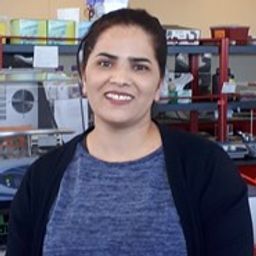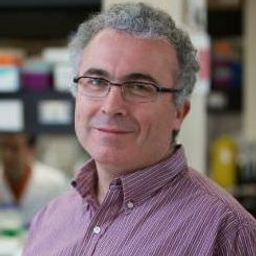Allele-specific CRISPR/Cas9 cleavage approach for two epidermolysis bullosa simplex mutations
Mon statut pour la session
Allele-specific CRISPR/Cas9 cleavage approach for two epidermolysis bullosa simplex mutations
Mbarka Bchetnia1,2, Julie Powell3, Charles Morin1,4, Catherine McCuaig3, Audrey Dupérée4, Jacques P. Tremblay5, Catherine Laprise1,2
1Université du Québec à
Chicoutimi, Département des sciences fondamentales, Saguenay, Canada;
2Université du Québec à
Chicoutimi, Centre intersectoriel en santé durable, Saguenay, Canada;
3Hôpital Ste-Justine,
Montréal, Canada;
4Centre intégré
universitaire de santé et des services sociaux du Saguenay-Lac-St-Jean,
Saguenay, Canada;
5Centre de recherche du
CHU de Québec, Université Laval, Québec, Canada;
Epidermolysis bullosa simplex (EBS) is a rare genetic disorder of the skin causedby dominant-negative mutations in either keratin 5 (KRT5) or keratin 14 (KRT14) resulting in impairment of keratin filament network and skin bubbles formation. More than 230 EBS causative mutations were described.Until now, there is notreatment for EBS and the care is primarily palliative. The discovery of the clustered regularly interspaced short palindromic repeat (CRISPR/Cas9) system, eight years ago, raised hope for the treatment of EBS by mutant allele-specific gene disruption induced by non-homologous end-joining (NHEJ).
Here, we aim to disrupt the mutant allele for two heterozygous EBS missense mutations in KRT5. Both mutations generate a novel protospacer-adjacent motif (PAM) for the endonuclease Streptococcus pyogenes Cas9 (SpCas9). Thus, for each mutation, we designed a guide RNA sequence (sgRNA) that guides the Cas9 to introduce a DNA cleavage only within the mutant allele in patient’s primary cells.
We achieved successful stringent mutant allele specific knockout indicating permanent mutant allele-specific inactivation. The wild-type allele remains unaffected and its protein product should be sufficient for normal function. Our next step is using this approach in induced pluripotent stem cells (iPSCs) generated for the two patients and then differentiate them into keratinocytes. Gene repaired keratinocytes will serve to engineer skin tissue that will be transplanted to patients as autografts.
Our study describes allele specific CRISPR/Cas9 gene inactivation at a novel PAM created by two EBS mutations and provides a model for application of such strategy to other dominantly inherited diseases.





